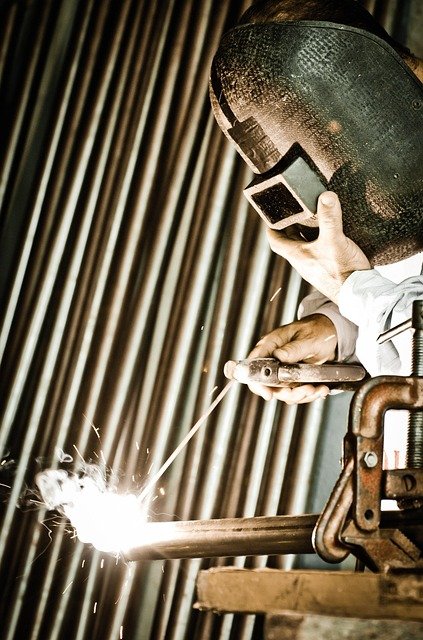Welding Training in Japan – Skills and Safety Standards
Welding training in Japan is designed to provide structured instruction in techniques such as arc welding, gas welding, and metal fabrication. Training programs emphasize proper equipment handling, adherence to safety procedures, and compliance with national technical standards. Participants learn within supervised environments where practical exercises are combined with theoretical knowledge to ensure organized skill development.

Core Techniques Taught in Japanese Welding Programs
Japanese welding training programs cover an impressive range of core techniques essential for professional success. Students typically begin with fundamentals like arc welding (SMAW), which serves as the foundation for more advanced methods. As training progresses, programs introduce MIG/MAG welding (GMAW), TIG welding (GTAW), and flux-cored arc welding (FCAW) – each technique carefully taught with attention to Japan’s meticulous standards for precision.
Programs often emphasize specialized techniques like pipe welding and thin-sheet metal welding that are particularly valuable in Japan’s manufacturing industries. Many training centers also incorporate automated and robotic welding instruction, reflecting Japan’s leadership in industrial automation. The technical curriculum typically includes metallurgy fundamentals, weld testing procedures, and blueprint reading – creating well-rounded professionals capable of understanding the entire welding process from planning to execution.
Safe Handling of Welding Tools and Equipment
Safety forms the cornerstone of welding training in Japan, with comprehensive instruction on proper equipment handling and risk management. Students receive detailed training on personal protective equipment (PPE) including specialized welding helmets, fire-resistant clothing, appropriate gloves, and respiratory protection. Japanese programs emphasize the importance of proper ventilation systems and teach students to recognize hazardous situations that might arise from fumes, gases, and particulates.
Training includes meticulous instruction on electrical safety, as many welding processes involve high voltages and currents that pose significant risks if mishandled. Students learn proper equipment inspection protocols and regular maintenance procedures to ensure tools function safely and effectively. Japanese welding programs also emphasize proper workspace organization and fire prevention techniques, reflecting the country’s strong cultural commitment to orderliness and preventative safety measures.
Compliance with Japanese Technical and Safety Standards
Japan maintains some of the world’s most rigorous welding standards, making regulatory compliance a critical component of training programs. Students become thoroughly familiar with the Japan Welding Engineering Society (JWES) standards, which establish specific requirements for different welding applications across industries. Training includes detailed instruction on the Japanese Industrial Standards (JIS) that govern welding processes, materials, and quality assessment methods.
Programs typically prepare students for certification under the ISO 9606 standards (welder qualification tests) and other international certifications that enhance employment prospects globally. Safety compliance training incorporates Japan’s Industrial Safety and Health Law regulations specific to welding operations. Many programs also include instruction on quality management systems aligned with ISO 9001 standards, reflecting Japan’s renowned commitment to quality control and continuous improvement methodologies in industrial settings.
Combination of Practical Exercises and Theoretical Knowledge
Japanese welding training balances hands-on skill development with comprehensive theoretical understanding. The practical component typically includes progressively challenging exercises beginning with basic weld joints and advancing to complex configurations that simulate real-world applications. Students work with various materials including mild steel, stainless steel, aluminum, and specialty alloys, gaining versatility essential for industry demands.
The theoretical curriculum covers welding metallurgy, explaining how different metals behave during the welding process and how to anticipate and address potential issues. Students learn about thermal dynamics, stress distribution, and material properties to understand the scientific principles behind welding processes. Many programs incorporate weld testing and inspection theory, teaching students to evaluate weld quality using visual inspection, destructive testing, and non-destructive examination methods like ultrasonic testing and radiography.
Structured Instruction in Welding Skills Development
Japanese welding programs feature carefully structured skill development pathways designed to build competence systematically. Training typically begins with fundamental skills assessment and individualized learning plans based on each student’s starting abilities. Programs often utilize module-based instruction with clear progression benchmarks that students must master before advancing to more complex techniques.
The structured approach includes regular evaluation through practical tests, theoretical examinations, and project assessments that simulate real-world welding challenges. Many programs incorporate apprenticeship components where students work alongside experienced welders in actual industrial settings. Advanced training often includes specialized instruction in emerging technologies like laser welding, electron beam welding, and other high-tech processes where Japan maintains global leadership.
Training Costs and Program Comparisons
Welding training programs in Japan vary significantly in cost depending on program length, certification options, and institutional reputation. Technical colleges offering comprehensive welding education typically charge between ¥800,000 and ¥1,500,000 for full certification programs lasting 1-2 years. Shorter specialized courses focusing on specific techniques or certifications generally range from ¥150,000 to ¥500,000.
| Institution Type | Program Duration | Approximate Cost (JPY) | Key Features |
|---|---|---|---|
| Technical Colleges | 1-2 years | ¥800,000 - ¥1,500,000 | Comprehensive curriculum, multiple certifications, job placement assistance |
| Vocational Schools | 6-12 months | ¥500,000 - ¥900,000 | Industry-focused training, practical emphasis |
| Industry Training Centers | 3-6 months | ¥300,000 - ¥700,000 | Specialized technique focus, connections to specific industries |
| Short Certification Courses | 2-8 weeks | ¥150,000 - ¥400,000 | Targeted skill development, specific certifications |
Prices, rates, or cost estimates mentioned in this article are based on the latest available information but may change over time. Independent research is advised before making financial decisions.
Many training institutions offer financial assistance options, including government subsidies for vocational training and industry-sponsored scholarships. Some employers also provide tuition reimbursement or fully-funded training for promising candidates, particularly in regions facing skilled welder shortages.
Conclusion
Welding training in Japan represents a sophisticated blend of traditional craftsmanship values and cutting-edge technological education. The country’s programs emphasize both technical excellence and strict safety standards while providing carefully structured skill development pathways. With its strong focus on certification, compliance with stringent technical standards, and balanced approach to theoretical and practical instruction, Japanese welding training prepares professionals who can meet the exacting demands of modern industrial applications while maintaining the country’s reputation for exceptional quality and precision in manufacturing.




